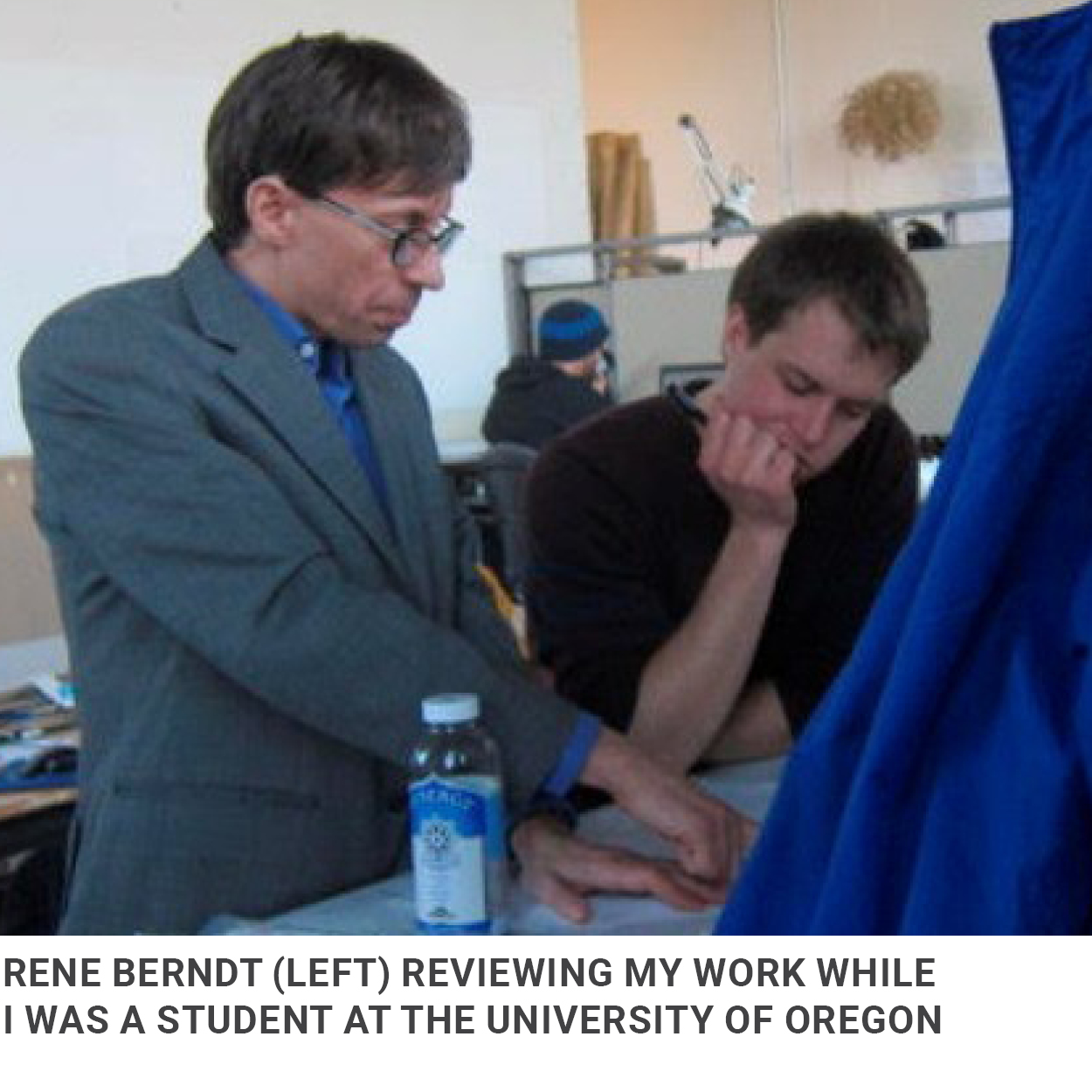by Bryan Hollar
Located about 20 miles south of Portland, Oregon is a small, tight-knit, historically rural community with a quaint downtown surrounded by farmland and the world’s largest Dahlia farm. It is home to longstanding traditions such as the Clackamas County Fair, an annual Fourth of July parade, and high school football games, where much of the town gathers on Friday nights. It’s a place where one’s sense of identity is inextricably intertwined with one’s sense of community. This might sound like a typical “small-town America,” but it’s not. This is Canby, Oregon, and this is my hometown.
CANBY’S INFLUENCE
Growing up in Canby, my interest in design was fostered from a young age. As a child, I would use leftover wood from house projects to build treehouses in my backyard. Once I was in middle school and high school, I signed up for every art and design-related class that the Canby School District had to offer, including ceramics, sculpture, drawing, painting, graphic design, woodworking, and architecture. Looking back, I’m so grateful I was able to enroll in such a large variety of design courses and I still value the expertise of the teachers who led them.

K-12 EDUCATION FACILITY DESIGN
After graduating from Canby High School, my interest in design led me to pursue a degree in architecture at the University of Oregon. My interest in K-12 facility design was inspired by education-focused design studios and K-12 school tours led by visiting professionals. Rene Berndt, a Project Designer with Mahlum, demonstrated to us how schools can be more than “factories for learning” and how thoughtful design can influence student behavior, improve learning outcomes, and help build community. These values deeply resonated with me, leading me to stay connected with Rene after graduating from college and ultimately joining him at Mahlum in 2016.
A FULL-CIRCLE MOMENT
As a member of Mahlum’s K-12 educational studio, I’ve found myself reflecting on my own school experiences. Though I enjoyed my time at Canby High School, I realize now that much of the built environment was dark, difficult to navigate, and lacked spaces to socialize. While I had accepted this as status quo at the time, I now realize me and my fellow students’ experiences were the result of a school facility lacking in thoughtfully designed spaces to support its community. Little did I know I would soon be given the opportunity to help address some of these issues.
In 2020, we were preparing a proposal to win the design contract for improving Canby School District’s facilities. As an educational facility architect and former Canby resident, I was asked to join the proposed project team. It was exciting to participate not only in my first project interview, but it was also surreal because the interview took place in the same classroom where I took my first architecture class! As an integrated team member who could bring my personal experience to the work, my involvement demonstrated to the district Mahlum’s commitment towards thoughtful design centered in community empowerment. We were awarded the contract and began work on a district-wide Master Plan to gain clarity and consensus on how the bond scope could best impact the Canby community.
COMMUNITY ENGAGEMENT
Taking place during the height of COVID lockdowns, the Master Plan process was conducted entirely online. While this initially proved challenging as all of us were learning to work in the virtual landscape, it ultimately created new opportunities to make our engagement process more equitable and inclusive. Our team developed new tools which enabled us to reach a broader range of stakeholders, including Canby’s Spanish-speaking members. Working with district translators, technology specialists, and a bilingual design team, virtual engagement sessions were simultaneously conducted in English and Spanish, allowing larger community input to be captured, synthesized, and broadcast back in real time during stakeholder meetings. This ultimately led to an engagement process that was truly representative of the diversity of Canby’s community.
ADDRESSING COMMUNITY CONCERNS
During the Master Plan process, stakeholders shared that wayfinding, a lack of identity, and lack of spaces to support the community were issues plaguing the current Canby High School campus – experiences I knew all too well. Our team kicked off the planned projects by implementing the Master Plan’s first phase at Canby High School: a new addition to replace an aging science wing.
The high school addition is designed to house new classrooms, science labs, and support spaces filled with fresh finishes and modern technology, while also addressing long-standing community concerns. The new structure forms an outdoor plaza adjacent to the track and field, fulfilling the need for a gathering space during football games and other large community events and celebrations. A double-height interior commons will serve as a new community “living room” and will bring daylight deep into the dark interior portions of the building. Previously dark, meandering hallways will be replaced with light-filled corridors that serve as better wayfinding, a gallery for student artwork, and alcoves to foster student socializing and collaboration.
STUDENT PARTICIPATION
With a sincere commitment to community empowerment, our design team has continued to engage with the school community during design and into construction – using the entire project process as a learning opportunity for the high school students. In addition to our initial outreach and engagement processes, we invited the high school leadership class to provide input on the furniture selection, journalism students interviewed me for a story about the proposed building design that was then featured in their student-led TV news program, and the graphic design class created a new school logo that will be displayed on a wood accent wall in the commons.
GIVING BACK
As the project nears completion and prepares to open this fall, I am so grateful for the opportunity I had to work on improvements to my own alma mater, and to be able to give back to the community that invested so much in me. This is the place where I was inspired to pursue a career in architecture, and I can think of no more meaningful way to empower this community than by using my skills as an architect to positively impact Canby for generations to come.
We’d like to thank the project team for their incredible work:
Owner: Canby School District
Project Management: Cornerstone Management Group
Contractor: Bremik Construction
Architect/Interiors: Mahlum
Landscape Architect: Walker Macy
Civil Engineer: Harper Houf Peterson Righellis
Structural Engineer: catena consulting engineers
Electrical/Technology Engineer: Reyes Engineering
Mechanical/Plumbing: Arris Consulting
Building Envelope: Professional Roofing Consultants
Acoustics: Acoustic Design Studio
Food Service Design: Halliday Associates
